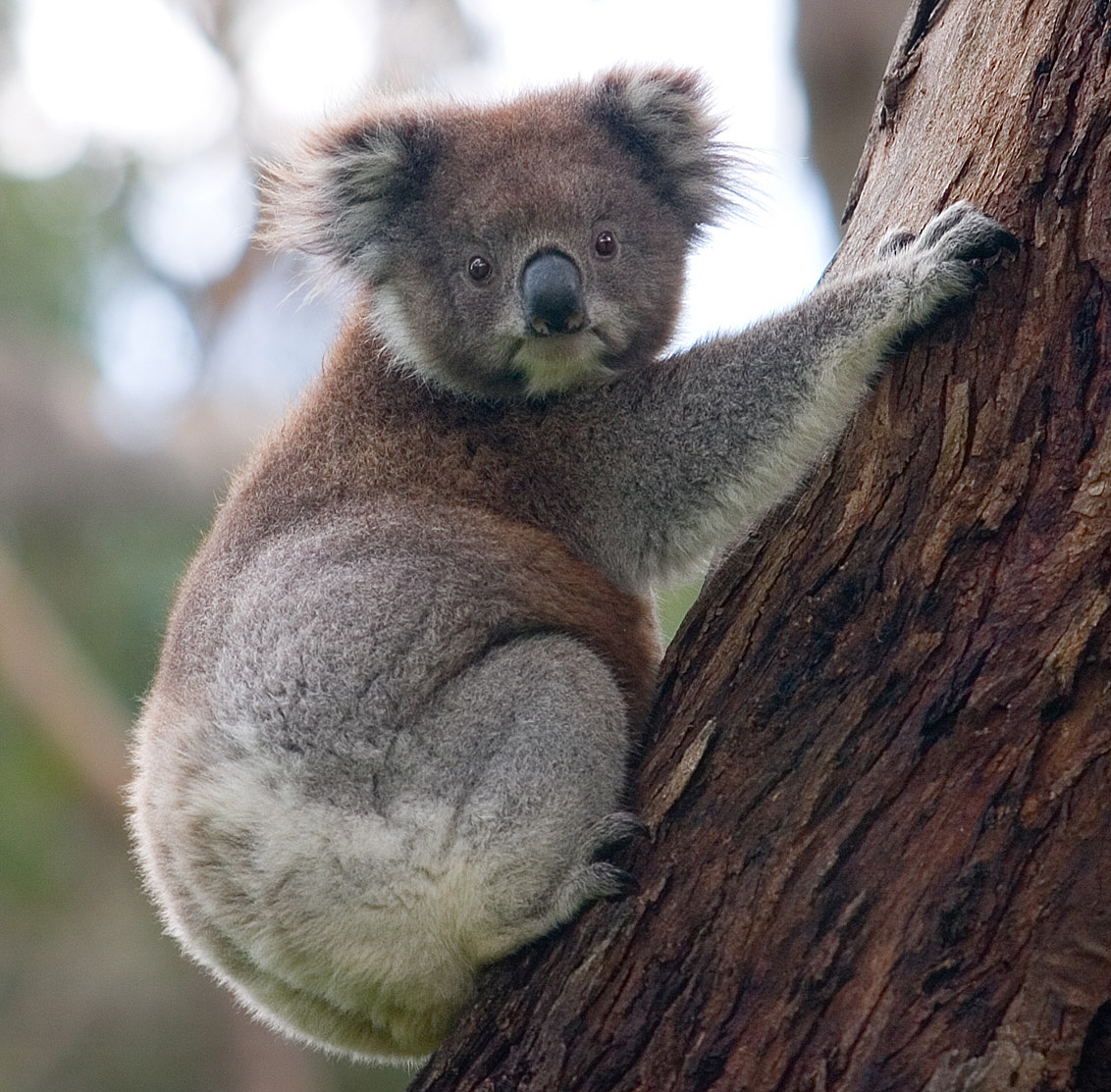Animals of Oceania and their customs!! |
 |
C A S S O W A R Y
WHO IS IT?
Its horny cap is a great peculiarity, and also helps it break down the obstacles it encounters along the way. The Cassowary is a bird that, when cornered, can be dangerous: it attacks by jumping, using its legs (with sharp and hard nails). Coming from Oceania, it lives in the heart of the tropical jungles and has hard feathers that protect it from branches and humidity.
WHAT ARE THEIR CUSTOMS?
The Cassowary is a solitary bird, although it forms a pair during the reproductive stage. In this species, it is the male who incubates the eggs (large, grainy and green) and takes care of the chicks. Its lack of dimorphism makes distinction between sexes difficult. Since it cannot fly, it feeds on fallen fruits from trees, as well as small insects and fungi. |
 |
K O A L A
WHO IS IT?
The Koala resembles a bear cub, in fact its thick and silky fur gives it an almost stuffed appearance. It has a round head, hairy ears and a flat nose. They are agile enough to jump vertically and horizontally (although this only males have this capacity). They live in eastern Australia, where there are more eucalyptus trees.
WHAT ARE THEIR CUSTOMS?
Nocturnal animal, the Koala lives in the trees, alone. What's more, it can become very aggressive when faced with the arrival of an intruder trying to share its territory. He likes to sleep perfectly installed in the fork of a branch. When it's cold, try to roll into a ball to protect yourself and maintain body heat. It sleeps during the day and feeds at night.
|
 |
R O C K W A L L A B Y
¿WHO IS IT?
Its full name is the Yellow-footed Rock Wallaby, although it is commonly called the Rock Wallaby. It is a marsupial recognizable by its ringed tail and the yellow of its characteristic legs (whose rough pads prevent slipping). They are very agile and jump between rocks while keeping their tail arched over their body; They can even climb trees with inclined trunks. They are distributed east of southern Australia and in small remote towns in Queensland. They have a powerful sense of hearing.
WHAT ARE YOUR CONSTUMMS
The Rock Wallaby is a nocturnal animal that remains sheltered in vegetation or in caves during the day. Lives in communities of less than 20 individuals. It feeds on grass, bark and bushes; Take advantage of dawn and dusk to look for food (since they are the coolest hours of the day). Little is known about breeding, given the shyness of the animal and the few specimens that exist outside the Australian continent. It seems that they can reproduce continuously and that the females store their embryos until they are needed. |
 |
R A I N B O W L O R I S
WHO IS IT?
The color that predominates in the robust body of this bird is green: on the back, rump and pointed tail. When flying, the loris spreads its bright wings and screeches loudly. While feeding, the rainbow loris is silent (so much so that it goes unnoticed among the vegetation, given its green plumage). Within the islands of its distribution area, and given the absence of predators, it has adopted a predominantly terrestrial way of life.
WHAT ARE THEIR CUSTOMS?
Normally it lives in large flocks since it is a sociable animal capable of forming mixed groups with other species. It feeds mainly on nectar, ripe fruits, flowers and insects. It has adapted to this diet: it uses its beak to crush the pulp of the fruit and extract the juice and seeds. There is no apparent sexual dimorphism, and only the female incubates the eggs, although the nest is prepared by both sexes, who are equally responsible for feeding the young. These leave the nest eight weeks after birth. |





